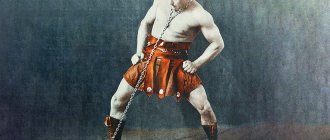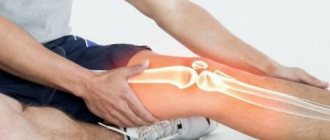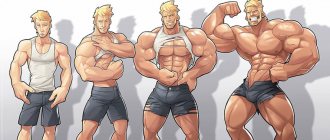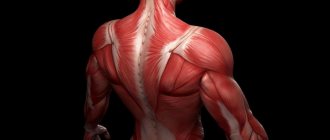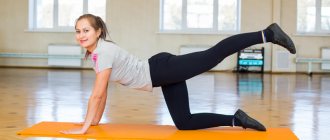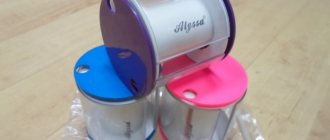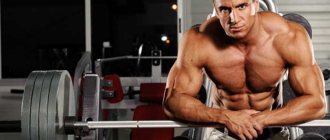Why is this happening
The main problem of the Achilles is insufficient blood supply, which becomes the main reason for its slow recovery after injury or inflammation. It should be noted that problems with the heel tendon do not arise out of nowhere, they seem to accumulate in it. Day after day, during training, microtraumas and inflammations form on it. However, each of us has our own cup of patience, and the Achilles is no exception in this regard. Quite often, it is inflammation of the Achilles tendon that causes it to rupture.
First aid
In this case, the victim should be laid down and the limb should be slightly elevated to prevent its swelling from increasing. An ice pack or, at worst, a wet towel soaked in cold water is applied to the affected area. When transporting the patient, it would be useful to apply a tight bandage to the affected area, which, by limiting the mobility of the joint, will help reduce pain.
The main treatment for heel tendonitis will be to avoid strenuous activity for a period of time.
Tips after an injury
Neglecting to strengthen ligaments often leads to damage. After an injury, it is impossible to do without rehabilitation training. Of course, before compiling a complex, you need to consult a doctor and strictly adhere to the advice of a specialist.
Basic recommendations:
- Before starting classes, you should give the damaged ligaments a short rest. You should avoid any stress for two to three weeks.
- The first workouts are performed without weights.
- Damaged ligaments should be trained no more than 10 minutes a day.
- If pain occurs, take a break for several days.
- After the ligaments are restored, only the lightest weights are used.
- It is advisable to add elements with an expander to your daily workout.
- The entire recovery period must take place under the strict supervision of a specialist.
Training after ligament damage is prepared by a doctor. The doctor takes into account the patient’s characteristics, the complexity of the injury, and selects the most harmless complex.
Refusal of products
Nutrition is an important component of strengthening ligaments. A properly selected diet is an integral part of an integrated approach. Some products will have to be completely abandoned.
What to exclude:
- I eat food with preservatives and chemicals.
- Carbonated drinks, especially sweet ones.
- Chewing gum.
- Lollipops.
- Chips.
Such products interfere with the absorption of substances necessary for joints and ligaments.
Recommended Products
Various nutritional supplements and medications will undoubtedly be helpful. However, first of all, you need to adjust your diet. This is especially true for overweight people. In this case, you will need a strict diet.
Which products to prefer:
- Food with vitamins C and E will be most beneficial. Tocopherol has a beneficial effect on tendons and helps avoid injuries.
- Carrot.
- Nuts.
- Beet.
- Celery.
- Sea buckthorn.
- Currant.
- Berries.
- Citrus.
- Aspic.
- Jelly.
- Eggs.
- Liver.
Ideally, you should contact a professional nutritionist who will adjust your diet.
Effective Supplements
There are many medications for ligaments. However, most of them are ineffective or expensive.
Proven drugs:
- Chondroitin sulfate.
- Collagen.
- Glucosamine sulfate.
- Vitamin D
- Calcium.
- Methylsulfonylmethane. Suppresses pain and inflammation, although it does not affect strengthening and recovery.
- Polyunsaturated fatty acids or Omega 3. The drug restores and improves joint mobility, reduces pain.
- Shark cartilage. Includes calcium, glucosamine, collagen. The effectiveness is noticeably lower than that of substances taken separately.
- Vitamins E, B, C.
- Minerals that affect joints and ligaments.
Taking medications has a positive effect, but you should not neglect warm-up and preventive exercises. Only an integrated approach will be most effective.
Healthy Supplements
There are also less effective drugs. Although you should not neglect them. Each supplement has its own positive aspects.
Medications of average effectiveness:
- S-adenosylmethionine. The disadvantage of the supplement is its high cost and large doses. About 1500 g of the drug will be needed per day.
- Bromelain. Eliminates pain and inflammation. Particularly effective after injuries.
- Curcumin. An extract with a weak, anti-inflammatory effect.
- Hyaluronic acid.
There are frequent cases when various painkillers and anti-inflammatory drugs are used for self-treatment. Eg:
- Ketanov.
- Aspirin.
- Paracetamol.
- Diclofenac.
The problem with such drugs is that they temporarily eliminate symptoms without providing a therapeutic effect on the shoulders, back, or knees. In addition, these medications have a negative effect on the body. These medications should only be taken during exacerbations or after an injury. It is best to use Celocoxib or Nimesulide.
In order to strengthen the Achilles tendon, you should:
Do heel squats daily. When performing the exercise, you need to extend your right hand forward and keep your left hand on your belt. While doing squats, try not to lose your balance.
How to do gymnastics correctly?
When performing a set of exercises to strengthen ligaments and tendons, there is a lack of synchronism in the development and adaptation of muscle tissue. This is because it responds to training more quickly than the slower ligamentous tendon complex. Therefore, it is important to take this point into account to avoid injury.
When training ligaments and tendons, you must follow the following recommendations:
- When training with a chain, it is important to remember that the object of development is the body, so you should not tear the equipment, but create a dense force wave.
- Breathing should be even and calm, movements should be smooth.
- You should not be nervous when performing a set of exercises. This is the only way to avoid headaches and stress.
- Each exercise is performed from one to five times, the break between them is 30-90 seconds.
- If you experience rapid heartbeat, shortness of breath or physical discomfort, it is recommended to pause, calm down and only then return to training.
- You need to start the exercises with low tension. Gradually move on to longer and more complex movements.
- The full complex is performed at least twice a week and no more than an hour.
- In order to prevent sprains of tendons and ligaments, it is important to perform a good warm-up with exercises for the back, arms and chest.
- The load is increased in stages, observing the technique of performing the elements.
- It is useful to include supplements in your diet that strengthen ligaments and joints.
Where does it hurt?
If the pain is felt at the bottom, closer to the heel (usually 3-5 cm from the sole) and worsens when trying to stand on your toes - 9 out of 10, this is tendonitis (inflammation) of the Achilles tendon. Does it hurt above, along the calf muscle? Well, most likely you pulled or tore it, and not the Achilles tendon.
Both symptoms, if not taken seriously enough, can lead to a complete rupture of the Achilles tendon, which usually occurs suddenly and seemingly out of nowhere, as was the case with Beckham.
Exercises with chains
Alexander Zass is a famous athlete and strongman who has developed a special training system with chains and bags. In his opinion, strength lies not in the muscles, but in the ligaments and tendons at the base of the muscles.
He never had a large physique. However, the demonstration of his power is amazing. He is able to break chains and horseshoes, tie metal rods and restrain horses rushing in different directions. He knows exactly how to strengthen ligaments and tendons, and offers a set of exercises he developed for training.
To perform them, you should purchase chains at the store and attach handles to them, as well as removable loops from belts to support your legs. The length of the projectile is equal to the distance from the floor to the tips of the fingers of an outstretched hand. At the initial stages of training, the chain can be replaced with a tape expander. Before you start performing the elements, it is important to warm up and normalize your breathing.
Next, we’ll look at how to strengthen ligaments and tendons using the Alexander Zass method.
How can I help you?
If you weren’t hit in the legs during training, you were just running, and suddenly - a sharp pain (as from a blow or a cut), and then swelling - that’s it, a rupture of the Achilles tendon. What do they do in such cases? Firstly, the victim needs to be laid down, and the sore limb needs to be elevated so that the swelling does not increase. Secondly, apply a bag of ice to the site of injury (well, who goes out to play football without a dozen of these bags, right?) or apply a tight fixing bandage to the patient. Third, take the sick person to the emergency room.
In the near future (from two weeks to six months), the patient will have to refrain from any physical activity (only swimming and, possibly, the exercises that you see at the bottom of the page are allowed).
SOLUTION: THREE EXERCISES THAT WILL MAKE YOUR ACHILLES TENDON STRONGER AND MORE ELASTIC
HEEL SQUATS
Stand with your heels on the edge of the step platform. Stretch your right hand in front of you, place your left hand on your belt - this will help you maintain balance (a). Without losing your balance, squat (b) and return to position A. 3 sets of 12 repetitions daily
ECCENTRIC LIFTS
Stand on the edge of the step platform (heels should remain outside the side), rise on your toes and lift one leg(s) off the platform. Slowly, on a count of 5, lower yourself onto your supporting leg (b). Repeat for the other leg. 3 sets of 15 repetitions for each leg twice a day
CALF MUSCLE STRETCH AGAINST THE WALL
Stand facing the wall at a distance of one and a half steps (a). Place one foot on the wall, pressing your heel to the surface of the wall (b). Stay in this position for 3 minutes. Switch legs and repeat. 1 set of 1 repetition for each leg 3 times a day
The consistency of the anatomical and histological structure of the Achilles tendon is the result of a long process of formation of tissues of the lower extremities in the womb. Even a slight oxygen deprivation during pregnancy can lead to disruption of the normal function of the Achilles, which will require correction in the future.
You can strengthen the Achilles tendon at any age and it is not so important what caused the injury. Nowadays, entire complexes have even been developed to help parents stretch the Achilles tendon of a child with cerebral palsy at home. Let's take a closer look at ways to stretch or strengthen the ligamentous apparatus of the lower limb.
Deadlift: execution technique for women
Exercises for tendons and ligaments must be performed in accordance with certain rules. This will protect you from injuries and sprains. Athletes should heed the following recommendations from experts:
- Ideally, a set of exercises is performed every other day. Each element is repeated 15-20 times in 2-3 approaches.
- Training with heavy weights should be carried out under the supervision of a trainer who will select the correct weight.
- It is recommended to use special bandages to protect the knees and tendons.
- The order of exercises should be changed regularly, for example, in one workout the back-arms-legs pattern is used, and in the next session the triceps-back-calves pattern is used. Thus, the tissues become elastic and less susceptible to injury.
- Performing exercises not completely makes it possible to increase the number of repetitions and make the tendons more resilient.
- If there are injuries or damage, classes are carried out using an expander. It allows you to correctly distribute and control the load on the body.
Many representatives of the weak half of humanity also dream of seeing themselves as strong and resilient. They are offered exercises with a barbell:
- Place your feet slightly wider than your shoulders, lightly touching the bar.
- Bending over, they take hold of it with their hands. For beginners, it is better to use a mixed grip.
- The back is in a neutral position, the shoulder blades are brought together, the legs are bent, the head is straight.
- Taking a deep breath, tense your abdominal muscles and, slightly straightening your legs, lift the barbell off the floor.
- The hips are pulled back and, holding the projectile close to the legs, raised to the level of the hips.
- When the body is at the top of the row, the hips are pushed forward and then the bar is lowered down.
- Start the exercise with 3-5 repetitions of 2-3 approaches.
Most women mistakenly believe that weight training is only for men. However, the inclusion of power lifting in a complex for the weaker sex has a number of advantages: it effectively burns adipose tissue, improves metabolism, allows you to acquire beautiful shapes, relieves back pain, tones muscles, corrects posture and pelvic position.
Signs of Achilles ligament dysfunction
The Achilles fixes the calf muscle on the heel bone. With the help of this formation, a person maintains the vertical axis of the body and has the ability to move the ankle joint, which ensures the movement of the feet when walking. Therefore, the main, but not the only, sign of Achilles tendon disease will be its pain when moving the foot and walking.
Symptoms of Achilles pathologies:
What is the difference between ligaments and tendons?
When starting to strengthen the musculoskeletal system, it is important to understand how ligaments differ from tendons. Ligaments are fairly flexible structures that surround a joint, support it, and prevent movement in the wrong direction.
Tendons are very similar in structure to ligaments, the difference is that tendons serve to connect muscles and bones. They transmit muscle forces to the bones and thereby set them in motion.
Diseases that lead to shortening of the Achilles tendon
In the ICD (International Classification of Diseases, 10th revision) there are many disease codes that, according to pathogenesis, can lead to Achilles pathology. But ultimately, tendon pathology will be treated as a separate disease.
Achilles tendon contracture can be congenital or acquired. It is formed as a result of an inflammatory process in which the dense elastic fibers of the tendon are replaced by connective tissue cells that do not have the proper softness, elasticity and strength.
A short Achilles tendon in children is most often a congenital pathology that occurs as a result of chronic fetal hypoxia during pregnancy. Due to oxygen starvation, the muscle tissue of the calf muscle and the tissue structure of the Achilles become more dense, which leads to false shortening of the tendon. Lengthening the ligament in this case is possible only with the help of gymnastics, massage and medications.
Diseases that can lead to shortening of the Achilles:
- Tendinitis is an acute inflammation of tendon tissue, which leads to disruption of not only its function, but also its histological structure. This condition can be caused by a ligament injury: rupture, cut, bruise.
- Tendinosis is a chronic inflammation caused by improper treatment of tendinitis or tendobursitis. Sometimes the condition is triggered by inflammation of the synovial membrane of the knee joint, then the entire limb must be treated at once (electrophoresis, massage, exercise therapy).
- Removing the Achilles tendon lump - with surgery there is always a risk of injury or infection. An incision during surgery leads to disruption of the structure of the ligament and its gradual shortening. Along with the formation, part of the healthy tissue is also removed, which reduces the length of the tendon. Lengthening is possible surgically or with the help of physical activity.
- Enthesopathy of the ankle joint. Develops as a result of contraction of the calf muscle. For this disease, stretching the Achilles with exercises is considered the main treatment method. You can also lengthen the muscle through massage, but the effect will only be noticeable after long-term therapy. It is recommended to supplement it with calcium supplements.
To maintain the strength of bones and ligaments, it is recommended to eat a healthy and varied diet; the diet should be rich in essential vitamins and microelements.
Why do you need to strengthen ligaments and tendons?
Sprained or torn ligaments and tendons are a fairly common injury. To get it, you don’t have to lift weights, dance or do heavy physical activity. You might simply stumble and sprain your foot, or lift a heavy bag of groceries in the supermarket.
As a result, partial or complete rupture of the fibers occurs, which can lead to various complications and even loss of some functions of the leg or arm.
And if for an ordinary person such an injury is associated with many inconveniences, then for an athlete it completely marks the end of his sports career.
To prevent this from happening, it is necessary to strengthen the ligaments and tendons. Moreover, everyone needs to do this, especially those who, due to their occupation, are forced to withstand heavy physical exertion.
Strengthening ligaments and tendons is also necessary for athletes. You should not think that cast muscles will save you from spraining or torn ligaments. The fact is that during physical activity, muscles grow much faster than the ligamentous-tendon complex can adapt to it. An imbalance occurs, which leads to injury. Therefore, it would also be useful for athletes to know how to strengthen ligaments.
Physical exercises to strengthen the Achilles
In rehabilitation after injury or surgery on the Achilles, it is important to achieve healing and complete restoration of the histological structure of the ligament. There is no need to rush and immediately start developing the tendon. It is necessary to wait until all signs of inflammation disappear completely and only then begin rehabilitation.
Each disease has its own rehabilitation period:
- Separation of tendon from bone. It is characterized by a violation of the integrity of not only the tendon, but also the tubercles of the heel bone, so the main goal of treatment is to restore the integrity of the bone. Depending on gender and age, treatment will take from 6 months to 1 year. Most often, this condition is associated with calcium deficiency in the body. This leads to calcification. The location of calcium ions in this case changes under the influence of certain medications or dysfunction of the parathyroid glands.
- Achilles rupture near the calf muscle. In this place, the tendon has an impressive thickness, since it receives the most nutrients through diffusion. Therefore, recovery will be quick and will take less than 6 months. In this case, stretching and strengthening the calf muscle also plays an important role, because it will also suffer.
- When the tendon is torn from the fusiform muscle, the position of all structures of the lower leg is disrupted: the calf takes a shortened position on top, and the tendon shortens and is located below near the heel bone. Treatment consists of suturing and lengthening the tendon and muscle surgically. Rehabilitation will take at least six months.
- An exercise to stretch and strengthen the back of the ankle. Take a standing position with your feet together. Rise and fall on your toes as many times as possible. If possible, stand on a height so that the heel hangs below the level of the support, and do the same movements.
- From a standing position, take a step back, keeping your body supported on your front leg. The hind leg is straight, standing on the toe. Lower the heel of your back leg toward the floor, keeping your knee joint straight. If your heel lands on the floor without difficulty, you can increase your stride length.
- Take a sitting position, legs forward. Try to reach your toes with your hands. If possible, lift your leg by the toes, while holding the knee joint of your working leg near the floor with your free hand. A good exercise for rehabilitation when the patient is not yet ready to fully put weight on the injured leg, but needs to deal with the consequences of the injury now.
- Take a lying position on your back. Raise your bent leg at the knee joint and press it to your stomach. Hold the ankle with your hands on both sides. Pull your foot until you experience characteristic pain in the area of the Achilles and calf muscles.
Isometric leg exercises
The following complex is proposed to achieve this goal:
- The end of the chain or expander is held with one outstretched hand, and with the other, bent at the elbow joint, it is stretched. Then the position of the hands is changed. The force should come from the chest and deltoid muscles.
- Raise your hands above your head a little wider than your shoulders and begin to stretch the chain, as if trying to break it. The force comes not only from the limbs, but also from the shoulder girdle and chest.
- The arms are placed behind the back so that the elbows are down and the hands are above them. With force from the triceps, they begin to stretch the chain or tape of the expander.
- Hands bent at the elbows are placed in front of the chest. With the force coming from them and the chest muscles, the chain is stretched.
- The arms are extended behind the back, the elbows are directed in different directions, the thumbs are turned towards each other. With tension coming from the triceps, as well as from the pectoral and latissimus muscles, a chain or expander is stretched.
- While exhaling, they wrap the projectile around the chest, and while inhaling, they try to tear it apart with the pectoral and latissimus muscles.
To train the ligaments and tendons of these parts of the body, the following complex is proposed:
- The feet are placed inside the leather loops and the chain is stretched, squeezing the muscles of the trapezius and arms.
- Stretch the chain over the outer thigh and pull it down, using the back and deltoid muscles. At the same time, the thigh also tenses.
- Use your foot to hold the chain by the loop and stretch it upward with your adjacent hand. The tension comes from the biceps.
- Position - palms resting on the floor, as during push-ups, the chain is draped around the neck and placed between the palms. The body is tensed, trying to break the chain using the deltoids and triceps.
Stand sideways, with the leg you are working on (without the expander) further from the door. Bring your leg (with the expander) away from the door behind the one you are working on. 2 sets of 15 reps.
Stand on the balancing platform. Optimal position: feet shoulder-width apart.
Congenital pathology of the Achilles tendon
You need to massage not only the lower leg, but also the feet
Shortening of the Achilles tendon in children is a sign of intrauterine fetal hypoxia. If you look at your legs while lying down, no changes will be visible. As soon as a child begins to stand or try to walk, you need to pay attention to his ability to lower his heel to the floor. It's cute when kids walk on their toes, but it's wrong. This feature gradually develops clubfoot and flat feet.
The flexibility of a tendon indicates its elasticity and strength.
In cerebral palsy (cerebral palsy), pathology of the ankle joint is almost always encountered. Only regular exercise and massage can smooth out a birth defect. And family physical education classes normalize the psychological atmosphere at home.
For severe tendon defects, the Vulpius plastic method is used for children with cauda equina.
Reviews about this method are twofold. Before you decide on it, you should try to correct the situation with massage and physical therapy. loads.
For such children, it is important not only to lengthen the Achilles tendon, but also to form a strong muscle corset that will correct all possible changes in the osseous-ligamentous apparatus. It is necessary to strengthen first of all the muscles of the back, abdomen and legs.
Children of any age need prevention of scoliosis and other spinal pathologies. To do this, children need to be given the opportunity to walk on sand and small pebbles, because a properly formed arch of the sole of the foot ensures uniform distribution of axial load on the spinal discs, preventing the formation of hernias and other back diseases.
https://youtu.be/oYJ0NDNKoeI
Ways to strengthen ligaments and tendons
To avoid injuries to ligaments and tendons, they need to be strengthened and “nourished”. Moreover, this must be done simultaneously in several directions. This complex includes:
- Balanced diet.
- Special preparations.
- Physical exercise.
Diet for ligaments
Good nutrition will perfectly strengthen the ligaments, make them strong and elastic, which will protect against accidental injuries. What you should pay attention to in nutrition. Such nutrition should become a lifestyle; only in this case can one hope for good results. It is also important to give up unhealthy foods and monitor your weight.
Weight normalization
Proper nutrition means normalizing body weight. Extra pounds create additional stress on the musculoskeletal system, including ligaments. It should be remembered that excessive dieting can also lead to negative consequences.
A person’s diet must contain fats, proteins, and carbohydrates, that is, the diet must be balanced.
Prohibited and permitted products
The consumption of foods containing preservatives and dyes, which interfere with the normal absorption of calcium and phosphorus, also negatively affects the musculoskeletal system. The body does not receive these important elements through food and begins to extract them from the musculoskeletal system. As a result, ligaments and tendons suffer.
It is advisable to exclude all these foods from the diet; instead, you need to eat those that contain large amounts of vitamins C, E, B12. After all, they are simply necessary to strengthen tendons and ligaments. Vitamin E is found in large quantities in foods such as:
- carrot;
- parsley;
- rose hip;
- sea buckthorn;
- wheat sprouts;
- gray bread.
And the required amount of vitamin C can be obtained by including citrus fruits, tomatoes, cabbage, sweet peppers, kiwi, currants, and gooseberries in your diet.
Collagen and proteins
An important component for connective tissue is collagen. Thanks to it, the tendons become elastic and can easily cope with loads. Collagen is contained in dishes that are prepared on the basis of gelatin - jellied meat, jellied meat, jelly.
Eating foods such as chicken eggs, liver, and beef will be very useful for strengthening ligaments and tendons.
They contain vitamin D and essential amino acids. An equally important product is fish. The fats it contains help protect tendon fibers from various overloads. Don't forget about dairy products, because they are a source of calcium, necessary for bones and joints.
Preparations for strengthening ligaments and joints
Often, the amount of nutrients and vitamins that a person receives with food is not enough to strengthen the musculoskeletal system. In this case, it is necessary to take care of additional nutrition for ligaments, joints and bones, which dietary supplements can provide. They are dietary supplements that are taken with food.
Dietary supplements are not medications and cannot solve radical problems, but they are very effective for preventing diseases and strengthening joints, bones and tendons.
In addition, supplements have a number of advantages over traditional medications. Dietary supplements contain only natural ingredients, have a minimum of side effects, and are not addictive. In addition, strengthening ligaments with the help of dietary supplements will cost less than treatment with medications. Preparations that are intended to strengthen connective tissue, joints and bones may contain:
The most popular drugs for the health of joints and ligaments are dietary supplements containing chondroitin and glucosamine. The complex action of these two substances will effectively protect and restore damaged areas of ligaments and joints:
- Dietary supplements with chondroitin are excellent chondroprotectors; they protect and strengthen joints, cartilage, ligaments, and tendons. Since chondroitin is a substance produced by the body itself, there are absolutely no side effects.
- Dietary supplements with glucosamine have a positive effect on the metabolic processes occurring in connective tissue and on its structure. Since the active substance of this drug is part of the cartilage, bones, and skin of blood vessels, it has a complex effect on the entire body. Dietary supplements with collagen are a must-have drug for strengthening ligaments. In addition, they stop the inflammatory process, provide additional nutrition and protection for the ligamentous-tendon complex.
